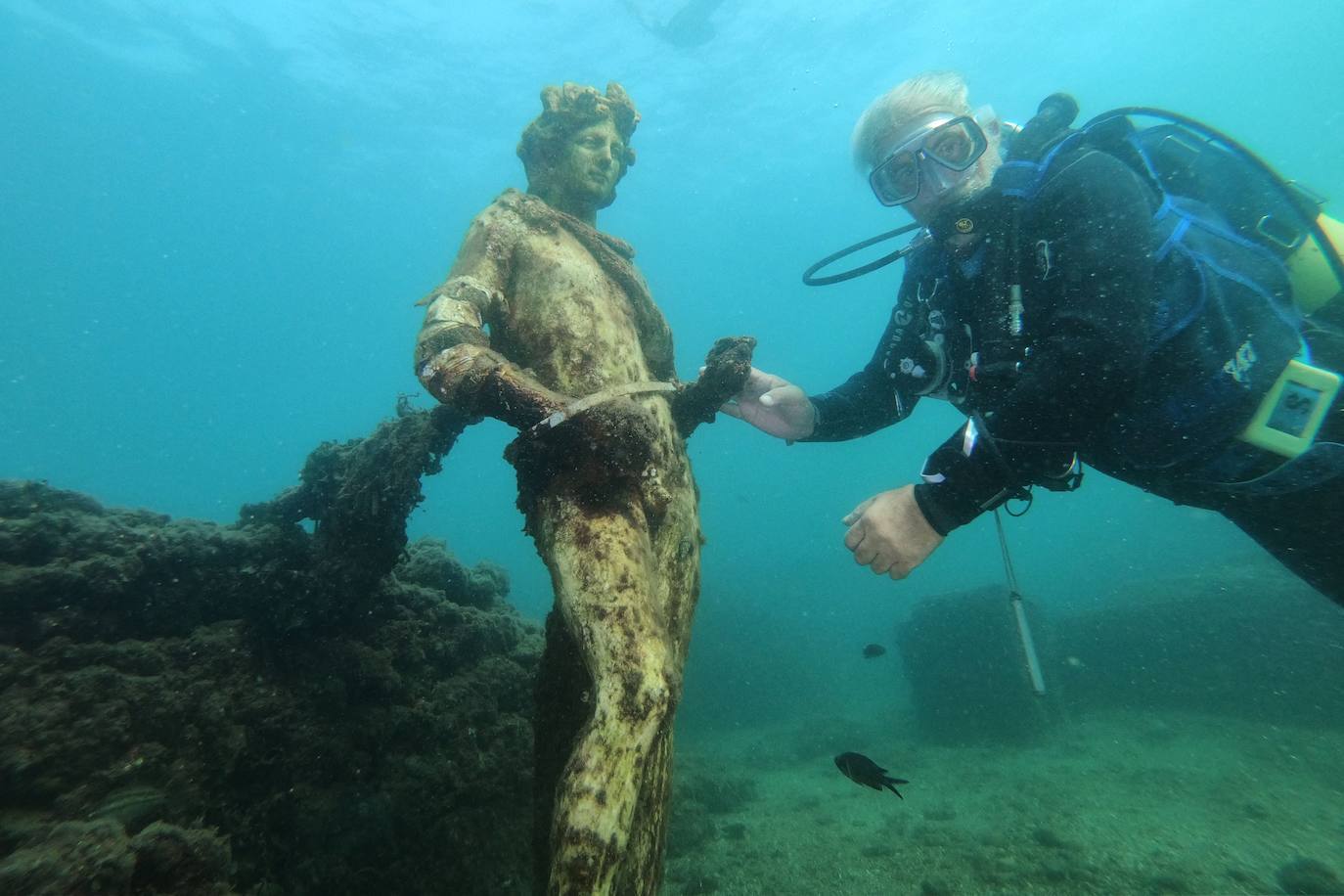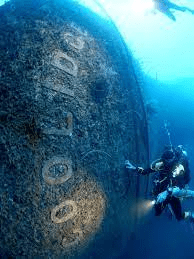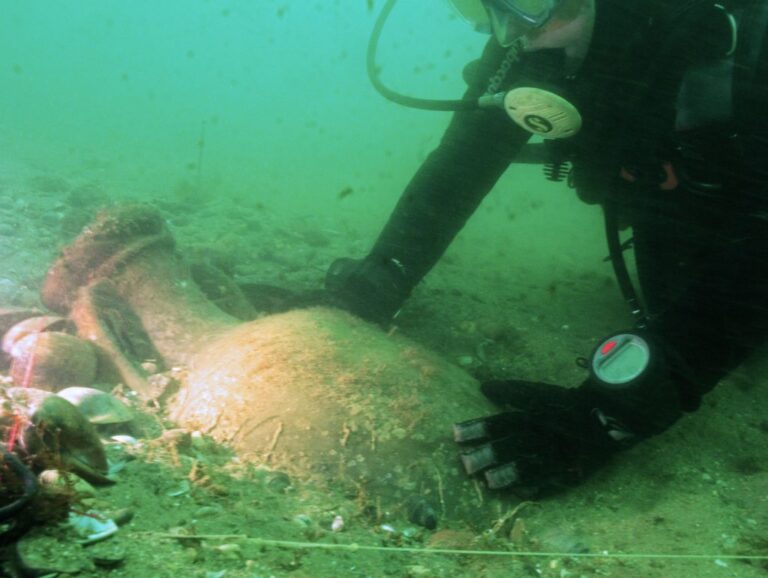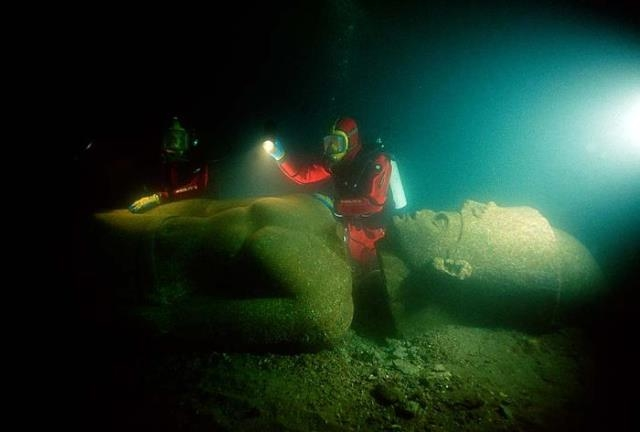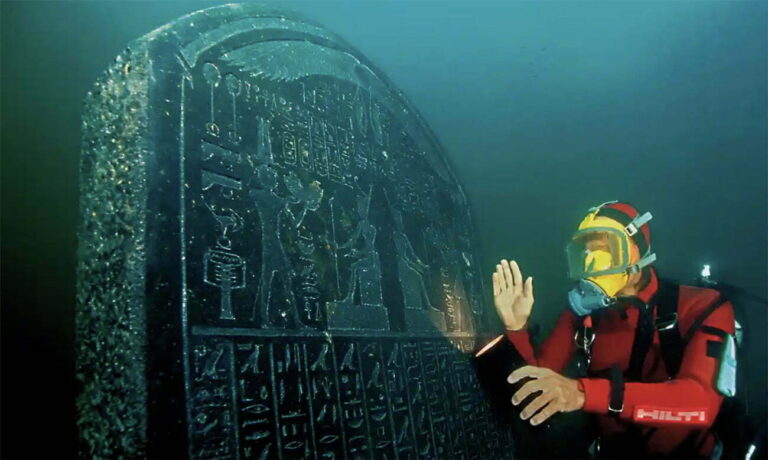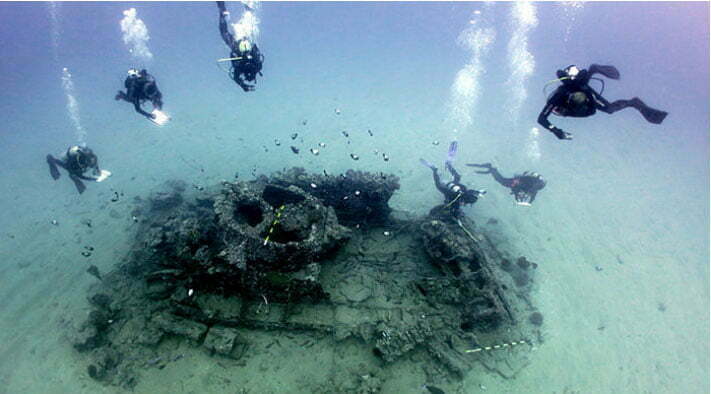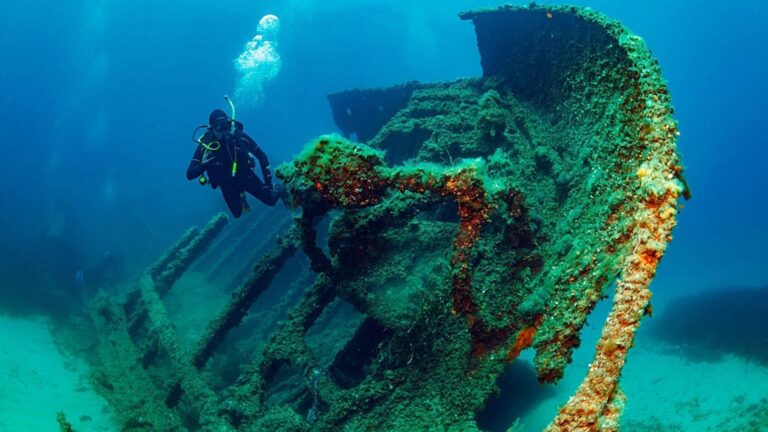Underwater Discoveries: A Dive into Hidden History
Underwater discoveries have always captivated the imagination of explorers and historians, as they provide a unique window into the hidden history of our world. These remarkable findings serve as a testament to the resilience of ancient civilizations and shed light on their daily lives, cultures, and achievements. By delving into the depths of the sea, we uncover a treasure trove of historical artifacts and sunken cities, unveiling secrets that have been submerged for centuries. Join us on a thrilling dive into the mesmerizing world of underwater discoveries, where ancient wonders await our exploration.
The significance of underwater discoveries cannot be overstated. Through these archaeological expeditions, we gain invaluable insights into our past and a deeper understanding of the civilizations that came before us. From the mythical city of Atlantis to the tragic wreckage of the RMS Titanic, each underwater discovery holds a piece of history waiting to be unraveled. These findings not only enhance our knowledge of ancient cultures but also challenge our preconceived notions and spark new lines of inquiry.
Advancements in technology have played a pivotal role in revolutionizing underwater exploration. Submarines, remotely operated vehicles (ROVs), and sonar systems have made it possible to navigate the depths with precision and discover hidden treasures lost to time. These advancements in equipment have not only expanded the scope of underwater exploration but have also allowed archaeologists to carefully document their findings, preserving them for future generations.
One of the most captivating aspects of underwater discoveries is the uncovering of sunken cities and lost civilizations. Diving into the depths, we unearth ancient metropolises like Heracleion in Egypt, with its great temples and monumental statues. These submerged cities provide a unique window into the past and challenge our understanding of ancient societies. The artifacts found within them not only tell stories of trade, craftsmanship, and artistic expression but also reveal the cultural exchange and interconnectedness of different civilizations.
Shipwrecks, in addition to being tragic reminders of maritime disasters, hold immense historical significance. They act as time capsules, preserving artifacts that provide crucial insights into seafaring traditions, maritime trade, and naval warfare. The Vasa in Sweden and the Mary Rose in England are prime examples of shipwrecks that have yielded extraordinary findings, offering a snapshot of life in different eras. These shipwrecks not only bear witness to historical events but also remind us of the human stories behind these catastrophes.
Underwater discoveries amaze us not only with their architectural wonders and shipwrecked vessels but also with the treasures they hold. Among the depths lie extraordinary artifacts, from ancient pottery and sculptures to glimmering jewels untouched for centuries. These objects not only showcase the skill and craftsmanship of our ancestors but also provide a tangible link to the past. By meticulously studying these artifacts, archaeologists can reconstruct past societies, shedding light on their rituals, beliefs, and way of life.
While underwater discoveries bring hidden history to the surface, they also face a unique set of challenges. Natural decay, looting, and environmental factors put these archaeological sites at risk. Preserving these underwater treasures requires ongoing efforts in conservation and protection. By raising awareness about the importance of these sites and supporting conservation initiatives, we can ensure that future generations will have the opportunity to explore and learn from these submerged worlds.
In conclusion, underwater discoveries offer us an opportunity to embark on a journey through time and unlock the secrets of the past. These findings not only broaden our understanding of ancient civilizations but also inspire us to appreciate the wonders that lie beneath the waves. Through conservation efforts and continued exploration, we can protect and preserve these hidden historical treasures and ensure that their stories are never lost to the depths. So, let us dive into the captivating realm of underwater discoveries, where the remnants of the past await our discovery.
Table of Contents
The Significance of Underwater Discoveries
Underwater discoveries hold immense historical value and have a profound impact on our understanding of ancient civilizations. These remarkable findings provide a glimpse into the hidden history that has long remained submerged beneath the depths of the sea. The exploration of underwater sites has revealed fascinating insights, shedding light on the mysteries and marvels of the past.
One of the most famous underwater archaeological sites is the submerged city of Atlantis, a legendary lost civilization. Though its existence remains a subject of debate, the mention of Atlantis in ancient texts and the numerous expeditions aimed at discovering its remains have captured the imaginations of enthusiasts and scholars alike. Uncovering Atlantis would not only rewrite history but also provide valuable insight into a civilization of great significance.
Another significant underwater discovery is the wreck of the RMS Titanic. This tragic event has fascinated the world for over a century, and the exploration of the sunken ship has revealed valuable historical artifacts and personal belongings. The artifacts recovered from the Titanic include jewelry, china, and even handwritten letters, providing a tangible connection to the individuals who perished in the disaster. These discoveries not only preserve the memory of those lost but also contribute to our understanding of the early 20th-century society and the challenges faced by maritime travel at the time.
The significance of underwater discoveries extends beyond the allure of famous sites. Through extensive research and excavation, archaeologists have uncovered forgotten ancient cities and civilizations that have been submerged for centuries. One such remarkable discovery is the city of Heracleion, located off the coast of Egypt. This once-thriving port city was lost to the sea for over a millennium until its remnants were finally uncovered. The findings from Heracleion provide a rare glimpse into the lives of its inhabitants and offer valuable insights into the trading routes and cultural exchanges of the time.
In conclusion, underwater discoveries hold immense historical significance, allowing us to unravel the secrets of ancient civilizations. From the mythical submerged city of Atlantis to the tragic relics of the RMS Titanic, these findings enrich our understanding of the past and provide a tangible connection to our ancestors. The exploration and preservation of underwater archaeological sites are of utmost importance, as they allow us to uncover hidden history and ensure that it is preserved for future generations.
Technological Advancements in Underwater Exploration
Advancements in technology have brought about a revolution in the field of underwater exploration. Submarines, remotely operated vehicles (ROVs), and sonar systems have played a crucial role in uncovering hidden underwater treasures and expanding our understanding of the past.
Submarines have been instrumental in enabling humans to explore the depths of the ocean. These specially designed vessels have the ability to withstand extreme pressure and provide a controlled environment for underwater expeditions. Through submarines, scientists and archaeologists have been able to reach depths that were once inaccessible, allowing them to discover and document submerged sites that hold significant historical value.
The introduction of ROVs has also revolutionized underwater exploration. These remote-controlled devices are equipped with cameras and manipulator arms that allow them to navigate and explore underwater environments with precision. ROVs have the ability to capture high-definition images and videos of archaeological sites, providing valuable insights into submerged structures and artifacts that were previously hidden from view.
Sonar systems have proven to be an invaluable tool in mapping and surveying underwater landscapes. By emitting sound waves and measuring their return, these systems can create detailed maps of the seafloor and identify potential underwater archaeological sites. Sonar technology has greatly assisted in the discovery of submerged cities, shipwrecks, and other hidden treasures, making it an essential component of underwater exploration.
These technological advancements have not only facilitated the discovery of underwater treasures but have also allowed for the preservation of these sites. By employing non-invasive methods such as ROVs and sonar systems, archaeologists can explore and document underwater sites without causing damage to delicate structures or artifacts. This ensures that these historical treasures can be studied and enjoyed by future generations.
In conclusion, technological advancements have transformed the field of underwater exploration. Submarines, ROVs, and sonar systems have provided us with the tools necessary to uncover and document hidden history beneath the sea. These advancements have not only expanded our knowledge of ancient civilizations but have also prompted us to appreciate the importance of preserving these underwater archaeological sites for the benefit of future generations.
Uncovering Sunken Cities and Lost Civilizations
Diving into the depths of the ocean, we are transported into a world of mystery and enchantment. Underwater discoveries have captivated explorers and historians for centuries, as they hold the key to unlocking hidden history. These submerged cities and lost civilizations provide us with invaluable insights into the past, painting a vivid picture of the ancient world that once thrived beneath the waves.
One of the most remarkable underwater discoveries is the legendary city of Heracleion, located off the coast of Egypt. For centuries, this ancient city lay hidden beneath the waters of the Mediterranean Sea, shrouded in myth and mystery. Recently, archaeologists have embarked on a quest to uncover its secrets. Their efforts have revealed a treasure trove of remarkable findings, providing a precious glimpse into the daily life and culture of the people who once called Heracleion home.
Among the significant findings in Heracleion are grand temples, intricately carved statues, and a wealth of artifacts. These findings not only shed light on the city’s religious practices and artistic achievements but also provide us with valuable historical context. The discovery of ancient inscriptions allows us to piece together the story of Heracleion, tracing its rise and fall through the centuries.
Furthermore, Heracleion’s location as a bustling port at the mouth of the Nile River has made it an essential hub for trade and cultural exchange. The artifacts recovered from the city’s underwater ruins bear witness to this cultural diversity, with influences from ancient Egypt, Greece, and other Mediterranean civilizations. These artifacts not only reveal the city’s history but also help paint a more complete picture of the ancient world and the interconnectedness of ancient civilizations.
Exploring sunken cities and lost civilizations is a window into another time, a chance to walk in the footsteps of our ancestors. Through these discoveries, we are reminded of the transient nature of human existence and the enduring legacy of the past. The exploration and preservation of these underwater treasures allow us to connect with our shared history, fostering a sense of awe and appreciation for the wonders that lie buried beneath the waves.
Shipwrecks: Windows into the Past
Shipwrecks have long been regarded as windows into the past, offering us a unique glimpse into historical events and cultures that would otherwise remain hidden beneath the sea. As these vessels sank, they inadvertently became time capsules, preserving artifacts and valuable clues about the past.
One remarkable shipwreck that stands out is the Vasa in Sweden. This 17th-century warship, considered one of the most well-preserved shipwrecks in the world, was salvaged in the 20th century after spending over 300 years underwater. The Vasa showcased intricate craftsmanship and provided historians with invaluable insights into naval warfare and daily life during the era.
Another notable shipwreck is the Mary Rose, located off the coast of England. This 16th-century warship sank in 1545 during a battle against the French. Its discovery and subsequent excavation in the 20th century revealed a treasure trove of artifacts, including weaponry, personal items, and even skeletons of the crew. These findings shed light on the naval warfare tactics of the time and provide a vivid snapshot of life onboard a warship.
These shipwrecks, along with many others scattered across the world’s oceans, serve as time capsules that offer rare and precious insights into the past. They bear witness to historical events, provide a tangible connection to our ancestors, and enrich our understanding of the cultures and societies that once thrived.
It is crucial to recognize the importance of preserving these shipwrecks and their artifacts. Each discovery provides a unique opportunity to uncover lost histories and learn from the past. Through careful conservation efforts, we can ensure that these treasures are accessible for future generations of researchers and history enthusiasts, allowing them to continue unlocking the mysteries of our shared human heritage.
In conclusion, shipwrecks are invaluable windows into the past. They act as time capsules, preserving artifacts and offering profound insights into historical events and cultures. Remarkable wrecks like the Vasa and the Mary Rose exemplify the significance of these discoveries, providing a rich tapestry of information that enhances our understanding of the past. Let us appreciate these remarkable remnants of history and support the conservation efforts that protect and preserve these invaluable underwater treasures.
Underwater Artifacts: Treasures of the Sea
-
Delve into the breathtaking underwater artifacts found during archaeological expeditions, such as remarkable ancient pottery, intricately crafted sculptures, and glittering jewels. These artifacts are like forgotten treasures waiting to be discovered in the depths of the sea. Each artifact holds a story of its own, revealing a glimpse into the lives of past civilizations.
-
Ancient pottery, with its delicate designs and colorful patterns, provides valuable insights into the cultures that created them. From simple utilitarian vessels to exquisite ceremonial pieces, these artifacts offer clues about ancient rituals, social structures, and artistic traditions.
-
Intricately crafted sculptures lying beneath the waves showcase the artistic skills of civilizations long gone. These sculptures depict gods and goddesses, mythical creatures, and important historical figures, offering a tangible connection to the past. Their details speak volumes about the artistic techniques, religious beliefs, and historical events of the time.
-
The discovery of glittering jewels submerged for centuries adds a touch of mystique to underwater archaeology. Unearthed gems, intricate gold and silver jewelry, and exquisite necklaces tell stories of wealth, power, and adornment in ancient societies. These artifacts not only serve as symbols of beauty but also shed light on the trading networks and cultural connections of the past.
Archaeologists and historians alike consider the preservation of these underwater artifacts vital for our understanding of past cultures. The study of these objects provides a tangible connection to history that transcends written records and allows us to experience the material culture of ancient civilizations.
Preserving these artifacts is a delicate task that requires specialized knowledge and techniques. The constantly changing underwater environment poses challenges such as erosion, corrosion, and biofouling. Conservation efforts aim to stabilize and protect these artifacts, ensuring their survival for future generations.
The significance of underwater artifacts cannot be overstated. These treasures of the sea hold the key to unraveling hidden histories, providing us with a deeper understanding of ancient cultures and their contributions to our world. By appreciating the value of these artifacts and supporting conservation efforts, we can ensure that our underwater heritage remains accessible and preserved for years to come.
Environmental Challenges and Conservation Efforts
Underwater archaeological sites face numerous environmental challenges that threaten the preservation of valuable relics and artifacts. One of the primary challenges is the natural decay caused by the harsh conditions of the underwater environment. The constant exposure to saltwater and marine organisms can degrade structures and erode delicate objects over time. Additionally, underwater sites are vulnerable to looting and illegal treasure hunting, where valuable artifacts are stolen for personal gain or sold on the black market.
To combat these challenges, conservation efforts are essential in protecting and preserving these important underwater treasures. One major strategy employed is site monitoring, where researchers regularly visit and document underwater sites to assess their condition and identify any signs of deterioration. This allows for prompt intervention to mitigate damage and prevent further deterioration.
Another crucial conservation effort involves site protection. This includes the establishment of marine reserves and protected zones to restrict access and prevent unauthorized activities that could harm the sites. Implementing strict regulations, such as prohibiting fishing or diving near underwater archaeological sites, helps minimize disturbances and maintain their integrity.
To aid in preservation, archaeological techniques and scientific methods are used to carefully extract artifacts from underwater sites without causing damage. Advanced technologies like 3D scanning and photogrammetry enable accurate and detailed documentation of the artifacts, ensuring their preservation even if they cannot be physically removed from the site.
Education and awareness are also key components of conservation efforts. By educating the public about the importance of underwater archaeological sites and the significance of preserving these treasures, individuals are encouraged to be responsible stewards of the underwater environment. This includes raising awareness about the harm caused by looting and illegal trade, as well as promoting ethical tourism practices that prioritize the conservation of these sites.
In conclusion, the environmental challenges faced by underwater archaeological sites are significant, but through conservation efforts, we can protect and preserve these important underwater treasures. By addressing natural decay, combatting looting, implementing site monitoring and protection, employing advanced technologies, and promoting education and awareness, we can ensure that future generations can continue to explore and learn from the hidden history submerged beneath the waves.
Conclusion
In conclusion, the world beneath the waves holds a wealth of hidden history waiting to be discovered through underwater explorations. These discoveries have immense historical value, as they provide us with insights into ancient civilizations and enable us to piece together their stories. From the submerged city of Atlantis to the famous wreck of the RMS Titanic, underwater discoveries have shed light on the mysteries of the past.
Technological advancements have played a crucial role in revolutionizing underwater exploration. Submarines, remotely operated vehicles (ROVs), and sonar systems have allowed researchers to uncover underwater treasures that were once inaccessible. These tools have opened up a whole new frontier for archaeologists and historians, enabling them to explore the depths and uncover forgotten cities and lost civilizations.
One such fascinating discovery is the legendary city of Heracleion in Egypt. Lost for centuries beneath the waters of the Mediterranean, this ancient city has provided significant findings that have expanded our understanding of the past. Through the study of sunken cities like Heracleion, we can gain valuable insights into the culture, architecture, and daily life of ancient civilizations.
Shipwrecks also serve as windows into the past, preserving artifacts and providing us with glimpses of historical events. The Vasa in Sweden and the Mary Rose in England are remarkable examples of well-preserved shipwrecks that have revealed a wealth of information about the time period they belonged to. These shipwrecks act as time capsules, allowing us to explore and learn about the past in a unique and tangible way.
Underwater artifacts found during archaeological expeditions, such as ancient pottery, sculptures, and jewels, offer breathtaking glimpses into past cultures. These treasures provide a tangible connection to our ancestors, allowing us to appreciate their craftsmanship and gain a deeper understanding of their way of life. Preserving these artifacts is crucial in order to protect and maintain our knowledge of history.
However, underwater archaeological sites face numerous environmental challenges. Natural decay, looting, and damage from commercial activities all pose a threat to these important underwater treasures. Conservation efforts are vital in protecting these sites and preserving their historical value for future generations.
In conclusion, underwater discoveries are essential in revealing hidden history. As we explore the fascinating world beneath the waves, we gain a deeper appreciation for the wonders that lie beneath the surface. By supporting conservation efforts for underwater archaeological sites, we can ensure that these treasures are safeguarded and continue to provide valuable insights into our past.

